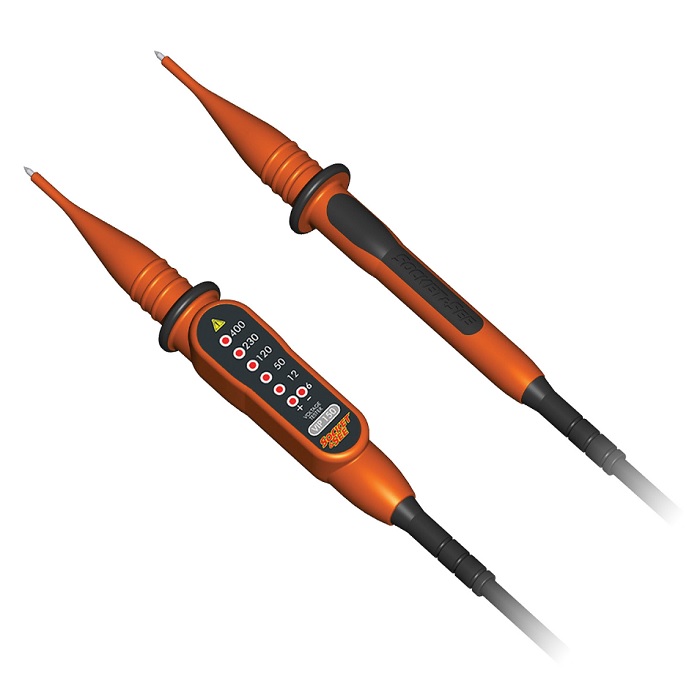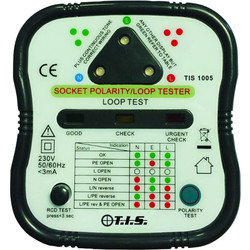Hi. Turned power off to change a socket front. Turned off at breaker not the RCD or mains. Checked that socket was dead got these readings Line to Neutral 0 volts , live earth 30 volts , neutral earth 30 volts. This is an old French house on a 3 phase supply Split at consumer unit and then each board of which there are 9 are using one of the phases per RCD. We had some shared neutral issues on the lighting circuits when we replaced all the boards. Why am I seeing voltage from neutral to earth and live to earth ? Any help would be appreciated.
You are using an out of date browser. It may not display this or other websites correctly.
You should upgrade or use an alternative browser.
You should upgrade or use an alternative browser.
Discuss Line to Neutral 0 volts , live earth 30 volts , neutral live 30 volts in the UK Electrical Forum area at ElectriciansForums.net
If it is French then the MCB will be double-pole, so when you switch it off both the L & N are "floating" and not connected to anything.
However, they will have some capacitance to any live cables nearby, and if you use a digital multimeter with (probably) a 10M ohm impedance to check for voltage you only need 3 microamps (0.000,003A) of coupled current to see 30V appear.
That is one reason why electrical apprentices have the it drummed in to them to use a "voltage tester" for proving dead, as they take a few milliamps (0.001A or more) to operate the LEDs. The other more important reason is voltage testers are simple, reliable, and safe. You don't have the opportunity to set them to the wrong setting and either kill yourself by the meter blowing up in your face, or killing yourself by selecting DC volts and not seeing 230V of AC volts being present.
For example:

 www.test-meter.co.uk
www.test-meter.co.uk
However, they will have some capacitance to any live cables nearby, and if you use a digital multimeter with (probably) a 10M ohm impedance to check for voltage you only need 3 microamps (0.000,003A) of coupled current to see 30V appear.
That is one reason why electrical apprentices have the it drummed in to them to use a "voltage tester" for proving dead, as they take a few milliamps (0.001A or more) to operate the LEDs. The other more important reason is voltage testers are simple, reliable, and safe. You don't have the opportunity to set them to the wrong setting and either kill yourself by the meter blowing up in your face, or killing yourself by selecting DC volts and not seeing 230V of AC volts being present.
For example:

Socket & See VIP150 Craftsman Voltage Tester
Socket & See VIP150 Craftsman Voltage Tester The Socket & See VIP 150 is a dual pole, six range voltage tester suitable for testing voltage on 6V, 12V, 50V, 120V, 230V and 400V AC/DC electrical supplies. Each voltage range is represented by a red LED ensuring clear voltage indication...
Using a multimeter to check for power is frowned upon by the electrical industry due to the number of ways it can go badly wrong! Reading "phantom voltages" as you are reporting is really the least of your worries.
So if you are doing much in the way of DIY then getting a basic voltage tester is a very good idea. I prefer the sort that don't need batteries as it is one less thing to forget to change and find it has leaked and ruined it. Equally you must test the tester every before using it! A professional would also buy a "proving unit" to provide various voltages on-demand to check the tester responds OK, but for DIY testing it on a known live outlet before checking something is not powered is a minimum step.
The issue of how good the earth rod is in a TT system is harder to check. A professional electrician would have equipment to measure that, most simply using a "multi function tester" (MFT) that can measure the earth fault impedance, but they cost around the £500-1000 region typically so not many DIYers are going to have access to one.
In the UK you can get better socket testers that do report high fault impedance, but they are not really designed for TT use as the majority of the UK is on TN-S or TN-C-S that has (or should have!) a very low and reliable earth impedance. For example:

 www.toolstation.com
www.toolstation.com
I don't know if a similar product is available in France to do that job with thresholds that are appropriate for TT installations, but maybe @Mike Johnson will know as he has some experience of French electrical work.
So if you are doing much in the way of DIY then getting a basic voltage tester is a very good idea. I prefer the sort that don't need batteries as it is one less thing to forget to change and find it has leaked and ruined it. Equally you must test the tester every before using it! A professional would also buy a "proving unit" to provide various voltages on-demand to check the tester responds OK, but for DIY testing it on a known live outlet before checking something is not powered is a minimum step.
The issue of how good the earth rod is in a TT system is harder to check. A professional electrician would have equipment to measure that, most simply using a "multi function tester" (MFT) that can measure the earth fault impedance, but they cost around the £500-1000 region typically so not many DIYers are going to have access to one.
In the UK you can get better socket testers that do report high fault impedance, but they are not really designed for TT use as the majority of the UK is on TN-S or TN-C-S that has (or should have!) a very low and reliable earth impedance. For example:

TIS Socket Tester With Loop & RCD Check
A pocket sized checker for indicating loop impedance, socket polarity and RCD 30mA are all ok. Indication is by LED's and buzzer. An ideal unit for initial "checking out" of a 13A socket and will advise if the circuit is ok, needs attention, or needs urgent attention. An ideal product for...
I don't know if a similar product is available in France to do that job with thresholds that are appropriate for TT installations, but maybe @Mike Johnson will know as he has some experience of French electrical work.
Last edited:
- Reaction score
- 4,338
I think the problem you are seeing is the three phase board having three RCD's one for each phase, only turning off one RCD on one phase will not fully isolate any leakage from the other phase's the only way to fully isolate the board is at the Tetrapolaire Disjoncteur de Branchement i.e. the EDF main switch, the one that goes off if you try to draw too munch power.
The socket testers are very good, but I have never seen a French one, you can use a UK version, but the only way is with a EU/UK extension lead correctly wired, don't be tempted to buy a UK version and use it in a EU/UK convertor most convertors reverse the polarity and will give false readings
The socket testers are very good, but I have never seen a French one, you can use a UK version, but the only way is with a EU/UK extension lead correctly wired, don't be tempted to buy a UK version and use it in a EU/UK convertor most convertors reverse the polarity and will give false readings
- Reaction score
- 4,338
Don't you just love predictive text, just noticed on the above post you may de drawing "munch" power.
Should have mentioned the fact that even with the whole thing switched off the CPC is still connected to the earth bar in the CU together with all the other circuits and you would be getting into the realms of parallel paths and possibly picking up potential earth voltage through the spike, open the cut off bar, (Barre de coupure), but do be careful when doing this as none of the circuits will be protected whilst it is disconnected, so mains off first then disconnect the earth bar.
Should have mentioned the fact that even with the whole thing switched off the CPC is still connected to the earth bar in the CU together with all the other circuits and you would be getting into the realms of parallel paths and possibly picking up potential earth voltage through the spike, open the cut off bar, (Barre de coupure), but do be careful when doing this as none of the circuits will be protected whilst it is disconnected, so mains off first then disconnect the earth bar.
Hi. Thanks to you all for your help. I do have a socket tester but it only checks polarity and it will do an RCD trip test. I understand what you’re saying about if I isolate 1 RCD on one of the 9 boards I’m only stopping current on my particular circuit. In parallel I will have power operating in other boards on the same phase plus on the other 2. What I still don’t understand is that there is no circuit after the main EDF switch that is not RCD protected - so if I’m seeing current from earth to line then there is leakage to earth that I’m picking up from parallel paths why are the other RCDs not tripping on this ? Or is it just not enough to do it. Ie 40ma on one RCD would need to be present and if I’ve got a little leakage on all circuits and poor earthing through the spikes I’m seeing this on the multimeter ?
What would be the best idea ? MFT earth fault loop impedance tester ( I have access to one ) and test the earth spike at each board that has one and remedy the earthing situation if there is one ? I think the impedance is supposed to be no higher that 100ohms on a TT in France?
What would be the best idea ? MFT earth fault loop impedance tester ( I have access to one ) and test the earth spike at each board that has one and remedy the earthing situation if there is one ? I think the impedance is supposed to be no higher that 100ohms on a TT in France?
Not enough to trip. Most RCD need 15-30mA to trip, but 30V on a 10M meter is only 0.003mAWhat I still don’t understand is that there is no circuit after the main EDF switch that is not RCD protected - so if I’m seeing current from earth to line then there is leakage to earth that I’m picking up from parallel paths why are the other RCDs not tripping on this ? Or is it just not enough to do it.
If you put the MFT on to any socket and run the earth loop test it will tell you the overall impedance of supply + earth rod. Given the supply is going to be much lower than the rod it basically tells you the rod impedance.What would be the best idea ? MFT earth fault loop impedance tester ( I have access to one ) and test the earth spike at each board that has one and remedy the earthing situation if there is one ? I think the impedance is supposed to be no higher that 100ohms on a TT in France?
I don't know the French regulations, but in the UK if you have 100mA or 30mA RCDs in use the rod has to be below 200 ohms to meet both the RCD limits (500 ohm & 1.67k) for 50V max rod voltage AND to be stable against seasonal variations of frost or drought, etc.
If you have something larger like a farm with a 300mA RCD then the rod should be less than 167 ohms (50V / 0.3A) and so on, but really you want it as low as practical and aiming for sub-100R is achievable with one or two 2m rods in most cases.
Ok. I’ll do some testing and report back. Thank you.Not enough to trip. Most RCD need 15-30mA to trip, but 30V on a 10M meter is only 0.003mA
If you put the MFT on to any socket and run the earth loop test it will tell you the overall impedance of supply + earth rod. Given the supply is going to be much lower than the rod it basically tells you the rod impedance.
I don't know the French regulations, but in the UK if you have 100mA or 30mA RCDs in use the rod has to be below 200 ohms to meet both the RCD limits (500 ohm & 1.67k) for 50V max rod voltage AND to be stable against seasonal variations of frost or drought, etc.
If you have something larger like a farm with a 300mA RCD then the rod should be less than 167 ohms (50V / 0.3A) and so on, but really you want it as low as practical and aiming for sub-100R is achievable with one or two 2m rods in most cases.
- Reaction score
- 4,338
The EDF main switch is a 100ma S Type RCD with current control in case you try to draw more than the tariff you are paying for, the smart meters now being installed everywhere are less tolerant than the old meters and I have been told only have a head of 2% whereas the prior meters had a head of 12%, this is why many who have the meter changed think they are using more electricity and many had to increase their tariff to cope with what they where previously getting away with.
TT Earth spike needs to be below 100Ω to be compliant.
If you are going the MFT route be careful what you use as some of them do not have the Earth Impedance facility built in, but you can get stand alone units for about €100,00.
Recommend this book: https://www.amazon.co.uk/Linstallat...p-2416000055/dp/2416000055/ref=dp_ob_image_bk for all things French electric's.
TT Earth spike needs to be below 100Ω to be compliant.
If you are going the MFT route be careful what you use as some of them do not have the Earth Impedance facility built in, but you can get stand alone units for about €100,00.
Recommend this book: https://www.amazon.co.uk/Linstallat...p-2416000055/dp/2416000055/ref=dp_ob_image_bk for all things French electric's.
- Reaction score
- 4,338
Just noticed you say "Spikes" plural, are all the spikes linked together back to the MET or to each other? The spikes have to be isolated when testing, do you have the facility to do that, if not and only the main spike has the "Barre de coupure" then testing each rod will serve no purpose they will also not contribute to the Ω reading of the main spike which is what has to be compliant at the EDF cut out, not the rods at the additional boards.
Must admit when I read you post first I though nine boards? Then thought about my own place and I have four boards in our three bed place so not untoward in reality.
Must admit when I read you post first I though nine boards? Then thought about my own place and I have four boards in our three bed place so not untoward in reality.
Last edited:
Reply to Line to Neutral 0 volts , live earth 30 volts , neutral live 30 volts in the UK Electrical Forum area at ElectriciansForums.net
Similar Threads
Having a challenge understanding the concept behind why when you measure across line and neutral (live circuit) using voltage indicators we have...
- Replies
- 25
- Views
- 1K
Extremely low voltage on 120v line
Hi, I’m not an electrician but my home has 20 amp breaker that has only one outdoor outlet on it with a GFCI...
- Replies
- 2
- Views
- 537
5 single phases to one huge property.
Backup generator which can take about 106 amps split between 2 phases - 1 phase will be wired through...
- Replies
- 2
- Views
- 504
Hi everyone,
When checking my consumer unit voltages with the full board off, I stumbled across something head scratching.
Measuring the feed...
- Replies
- 1
- Views
- 577
Hi all,
New to the forum.
I have been asked to look at this for one of our guys who's had an issue onsite after some electrical works had been...
- Replies
- 4
- Views
- 675
OFFICIAL SPONSORS








These Official Forum Sponsors May Provide Discounts to Regular Forum Members - If you would like to sponsor us then CLICK HERE and post a thread with who you are, and we'll send you some stats etc
Electrical Forum
Welcome to the Electrical Forum at ElectriciansForums.net. The friendliest electrical
forum online. General electrical questions and answers can be found in the electrical forum.
This website was designed, optimised and is hosted by Untold Media. Operating under the name Untold Media since 2001.
